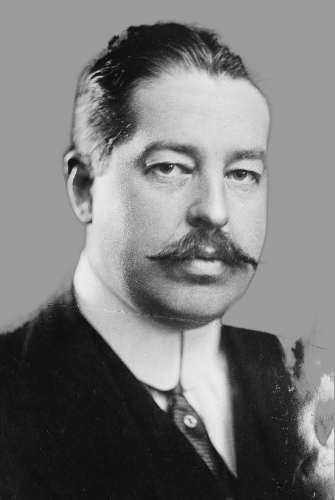Table of Contents
Reginald Claypoole Vanderbilt
Reginald Claypoole Vanderbilt, a name synonymous with wealth and privilege, is one of the most prominent members of the iconic Vanderbilt family. Born into a world of opulence and luxury, Reginald’s life journey was marked by extravagant wealth and profound tragedy. In this article, we delve into the life and times of Reginald Claypoole Vanderbilt age, including his early years, the glamorous society of the Gilded Age, and the lasting impact of his legacy.
| Category | Information |
| Name | Reginald Claypoole Vanderbilt |
| Age | 45 years |
| Birthdate | January 14, 1880 |
| Died | September 4, 1925 |
| Birthplace | Staten Island, New York |
| Nationality | American |
Reginald Claypoole Vanderbilt’s age
Reginald Claypoole Vanderbilt age during the Gilded Age was a period of immense economic growth and excess in the United States. He was a part of the social elite, attending lavish parties, balls, and events alongside other members of high society. His family’s wealth allowed him to travel extensively and indulge in the finest luxuries of the era.
Early Life and Education
Born on November 19, 1880, Reginald Claypoole Vanderbilt was the youngest son of Cornelius Vanderbilt II and Alice Claypoole Gwynne Vanderbilt. His childhood was spent in the opulent Vanderbilt mansion on Fifth Avenue in New York City, where he was exposed to a world of extravagance and luxury. However, Reginald was not content to rest solely on his family’s laurels.
A Life of Extravagance
Reginald Claypoole Vanderbilt’s net worth allowed him to indulge in the excesses of the Gilded Age. Lavish parties, extravagant travel, and high-society gatherings were commonplace in his life. He collected fine art and antiques, further enhancing his opulent lifestyle.
A Passion for Art and Collecting
Reginald’s true passion lay in the world of art and collecting. From a young age, he demonstrated a keen eye for aesthetics and a deep appreciation for fine art. This interest led him to embark on a career as an art collector and philanthropist.
Gilded Age Splendor
Reginald came of age during the Gilded Age, a period of immense economic growth and excess in the United States. He was a part of the social elite, attending lavish parties, balls, and events alongside other members of high society. His family’s wealth allowed him to travel extensively and indulge in the finest luxuries of the era.
Tragedy Strikes
Despite the opulent lifestyle, tragedy would define much of Reginald’s life. The Vanderbilt family had been plagued by what some called the “Vanderbilt Curse” – a series of unfortunate events and early deaths among family members. Reginald himself was not immune to this curse. He passed away due to complications arising from a chronic illness.
Art Collecting and Philanthropy
Reginald Claypoole Vanderbilt’s career can be characterized by his relentless pursuit of art and dedication to preserving cultural heritage. He amassed an impressive collection of European art, including paintings, sculptures, and decorative arts.
His discerning taste and commitment to the arts earned him recognition among the art community. Beyond his collection, Reginald was a philanthropist with a mission to support and promote the skills. He donated significant artworks to museums and institutions, enriching their collections and ensuring that future generations could appreciate their beauty and cultural significance.
Read More: Cecil Kellaway Net Worth: The Legacy Of A Prolific Actor, Age, Height, Career, And…
The Vanderbilt Dynasty’s Wealth
The Vanderbilt family’s wealth can be traced back to Cornelius Vanderbilt, the “Commodore,” who amassed a colossal fortune in the 19th century through savvy investments in shipping and railroads. This initial wealth laid the foundation for subsequent generations of Vanderbilts to inherit vast fortunes.
Philanthropic Contributions
While the Vanderbilt family was known for their lavish lifestyle, they also had a legacy of philanthropy. Many family members, including Reginald, supported charitable causes. Their contributions funded educational institutions, hospitals, and cultural organizations, leaving a lasting impact on society.
Legacy and Impact
Reginald Claypoole Vanderbilt’s life and legacy continue to capture the imagination of those intrigued by the Vanderbilt dynasty. While he lived a life of privilege and luxury, his untimely death is a poignant reminder that wealth does not shield one from life’s trials and tribulations. His inheritance ultimately contributed to further establishing various philanthropic endeavors within the Vanderbilt family, leaving a lasting mark on the world of charitable giving.
Conclusion
Reginald Claypoole Vanderbilt’s life is a captivating chapter in the saga of the Vanderbilt family. From his upbringing in the lap of luxury to his untimely demise, his story offers a glimpse into the complex world of Gilded Age America. His legacy, in terms of the family’s enduring philanthropic contributions and the tales of extravagance and tragedy, continues to be a fascination for those interested in the history of American wealth and society.
Apart from that, if you want to know about John Legend Net Worth Then please visit our entertainment category.
FAQs
Reginald had several siblings, including Cornelius Vanderbilt III and Gertrude Vanderbilt Whitney, who were notable in their own right. His family tree was filled with prominent figures within American society.
Absolutely. Reginald Claypoole Vanderbilt’s wealth and opulent lifestyle were directly attributed to his family’s immense fortune, primarily generated during the Gilded Age through investments in railroads and shipping.
The Gilded Age’s excesses greatly influenced Reginald Claypoole Vanderbilt’s life. He was born into immense wealth and privilege, which allowed him to partake in the extravagant lifestyle that defined this era, including lavish parties, fine art collections, and luxury travel.























